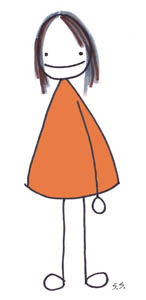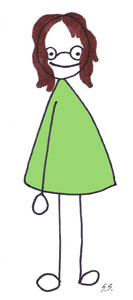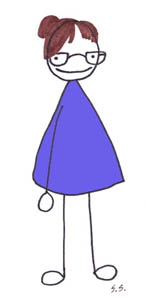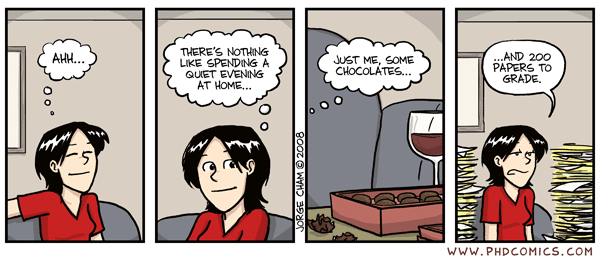As the end of semester approaches, GA duties often take the shape of grading. Hopefully, last Friday’s comics put you in a positive frame of mind to tackle whatever assignments, labs, or essays you have to evaluate. Today’s tips focus on making the grading task a little easier.
Ideally, assignments were designed based on the course’s learning outcomes. This means that the work students have completed aligns with the stated learning objectives. When this is the case, assessment directly measures how well students have mastered the learning outcomes set out at the beginning of the course.

Using a rubric simplifies the task of grading. Rubrics help you maintain grading consistency from the papers graded at the top of the pile right through to the bottom. Using a rubric keeps you focused on the skills being assessed and when they are returned, students can see what is expected at each level of mastery. This can help cut down on questions like “what do I have to do to get an A?”
Some professors provide their grading assistants with rubrics, but don’t despair if you did not receive one. There are many examples available online or you can create one based on the assignment outline. Try searching online for “rubric + (your discipline) + higher ed” for a template.
Do you have any other tips for grading? Please share them in the comments below.
When I first arrived at the University of Windsor, I had no idea there was such a thing as a Centre for Teaching and Learning. I spent several years here not knowing there were resources available to help with my teaching skills. I thought that professional development was only about how to write a better resume, and like many of my peers, I believed that learning to teach was a matter of trial and error. Eventually, I hoped to “grow into” being the kind of teacher I admired. Unfortunately, during the trial-and-error years, my students would have to suffer through some pretty boring or frustrating times. Since discovering the Centre for Teaching and Learning (or the CTL, as we usually call it), I’ve been taking advantage of as many opportunities as I can to improve my teaching. I’ve also enjoyed reading about what others are doing.

The CTL’s website can act as a gateway for anyone who wants to read more about Teaching and Learning. They have links to articles and sites where it’s easy to find helpful suggestions or find out what the research says about teaching and learning. You can find out quite a bit about what the CTL does by scanning through the menu on the left-hand side of the screen.
Today, I want to highlight the Teaching and Learning Resources section, where you can find the link to Links and Resources. The menu of links on the right-hand side of the screen is the gateway I mentioned above. For example, following the “Students” link can lead you to articles about working with first-year students, a website full of teaching tips, some PowerPoint presentations, as well as links to numerous other sites having to do with the student experience. Following the “Other” link can lead you to a series of links with other programs and associations. For example, the “Faculty Development Associates – Online Resources” link leads to a whole page of links to other sites at universities and organizations having to do with teaching and learning. When you have a few minutes, browse through these resources to see what might be useful for your own situation.
Warning: the links to links can be addictive and may affect your study schedule!
The end of semester means several things for most GAs and TAs: one is wrapping up your own semester of research, courses, writing, and whatnot. The other likely responsibility you’re facing is some type of grading, feedback, or assessment for the students in the course you’re assisting. Since today is Friday and we promised you laughs, have a look at these comics about grading from Jorge Cham, comic extraordinaire at Piled Higher and Deeper. PhD Comics have been making grad students laugh (sometimes at themselves) since 1997. If you like what you see here, head over to the site and find more laughs on all aspects of being a grad student. If you’re a real fan, you might want to watch this page for details about Jorge’s upcoming visit to U. Michigan on December 1st.
And now, laughing about grading:
[ But first a caveat: providing useful feedback is one of the most important things you can do as a teacher. Feedback helps students learn what they’re doing right and where they need to improve. Also, the GATA Team encourages you to practice fire safety at all times.]
Since we’re headed for some miserable weather this weekend, let’s start off with this comic. Here is how the weekend of grading begins:
Things are going fine, but this TA knows grading is more fun with a yummy snack to keep you company:
Later that night, things start to get a little …mmm … weird .. :
As the stack grows smaller, so does the TA’s composure:
Enjoy your weekend. May it bring you yummy treats, perfect papers, and oodles of patience.
 Remembering the names of students comes easy for some, not so easy for others. I like to know student names because it helps build a bridge between instructor and student, which can lead to greater interaction. Knowing each other’s names helps us form a classroom community. It’s also respectful and mutual respect is something I like to foster in my classroom. Also, when there are grades allotted for participation, like class discussion, it’s imperative to know who is speaking.
Remembering the names of students comes easy for some, not so easy for others. I like to know student names because it helps build a bridge between instructor and student, which can lead to greater interaction. Knowing each other’s names helps us form a classroom community. It’s also respectful and mutual respect is something I like to foster in my classroom. Also, when there are grades allotted for participation, like class discussion, it’s imperative to know who is speaking.
In small classes it can be much easier to get to know each student, but once you get up to class sizes of 30, 50, 80 or more it becomes more difficult.
At the beginning of the semester I provide markers and paper in contrasting colours and ask each student to make a name tent to put in front of them on the table or desk. What other methods do you use to help you learn names? Do you teach in a space where students move around a lot? If so, what do you do to help you remember?
This week wraps up our team introductions. Next week we launch into our regularly scheduled programming (details below), which we hope will be of use to you: valuable not just in your quest to become a better teacher, but also as a source of ideas, discussion, and community as you develop as a graduate student, scholar, and individual. We’d love for you to contribute a thought, a question, or a response to someone else’s question. Leave a comment anytime or send email to gata@uwindsor.ca
So now, introducing Candace Nast, Digital Outreach Coordinator for the GATA Team:
 As far as formal education goes, I have an undergraduate degree in Women’s Studies and an MA in History. I’m currently a sessional instructor in History and Women’s Studies and I also work as a web developer and social media specialist. My passion is using online tools to map social history and I’m always looking for new ways to show and share how people’s lives have changed over time.
As far as formal education goes, I have an undergraduate degree in Women’s Studies and an MA in History. I’m currently a sessional instructor in History and Women’s Studies and I also work as a web developer and social media specialist. My passion is using online tools to map social history and I’m always looking for new ways to show and share how people’s lives have changed over time.
I’ve had a lot of different jobs. To help me keep track of where I’ve been and what I’ve done, I keep a master spreadsheet of every job I’ve held since high school. I’ve worked as a clown, in a library, composed folk opera, done copy-editing and breastfeeding counselling, taught classical ballet, designed and sewn costumes, organized conferences, worked in dinner theatre and children’s theatre, managed online communities, been a guest speaker, a TA, a photographer, a web consultant, and most recently, a sessional instructor. While it might seem a diverse list, the truth is, a lot of the skills required for each job overlap. Certainly, the domains might be different, but the ability to express an original thought, communicate a point, find creative solutions to problems, and nurture new ideas are common to all.
In each position I’ve held, whether it’s been in a place of paid employment or in my everyday life, I’ve learned skills that have helped me with my teaching. I think about teaching and learning in broad terms so it’s easy for me to see how much of learning takes place outside the classroom. Learning to make a phone call, learning to cook, learning to walk, talk, tie our shoes — many people learn these things without formal instruction. To learn these things, most people probably don’t choose a school, sign up for a course, and attend sessions for a series of weeks. There probably isn’t homework, a designated instructor, or an exam. But yet people learn them.
Think about the list of skills in bold above:
- express an original thought
- communicate a point
- find creative solutions to problems
- nurture new ideas
Haven’t we all done these things? Isn’t this what teaching and learning is about? As teachers, we help our students develop their abilities to think, evaluate, express, and hopefully we want this process to continue after students leave us. We can draw from our experiences teaching and learning outside the classroom to help our students. For example, think about how you might teach a child to drink from a straw, then use this the next time you’re demonstrating a technique in your lab. How would you break it down for the child? What are the first things to know? What do they have to understand before they can get the liquid up the straw? How much information can they handle at once? Are there skills that have to come first, before the straw is meaningful?
Just because you might be new to the formal classroom doesn’t mean you’ve never taught before. If you created your own master-job-experience-spreadsheet, you might find elements of teaching in much of what you’ve already done. Draw from this — it is valuable experience!
And with that, away we go, Towards Better Teaching! Later this week we’ll add our Wednesday question and next week we’ll add our Tuesday Tip. After that we’ll be operating according to our full publishing schedule:
Schedule
- Monday: The methods and practice of teaching (i.e. Pedagogy)
- A post exploring the theory behind scholarly teaching. Hopefully something that will leave you thinking all week long.
- Tuesday: Teaching tips
- A quick tip that you can use right away or hang on to for future use.
- Wednesday: Questions & Scenarios.
- Got a question about teaching or learning? Facing a classroom dilemma? Not sure what to do? Not sure who can help? Send an email to gata@uwindsor where we have a team of experts standing by in the Centre for Teaching and Learning. Armed with ideas, resources, and all kinds of exciting teaching tools, these superheroes of teaching and learning are here to help you make your classroom a better teaching and learning environment for you and your students.
- Friday: Something light to get your weekend started.
- Who couldn’t use another chance to smile? You might even LOL. Maybe a video, maybe a comic, hopefully entertaining.
Sir Ken Robinson is an internationally recognized leader in the development of creativity, innovation and human resources. According to Sir Ken, everyone has had an interesting education. In this talk he states, “creativity is as important as literacy and we should treat it with the same status” and goes on to encourage us to be wrong. He argues that today’s educational system discourages people from taking chances. What would a learning environment look like that encouraged risk without penalty for mistakes?
Do you think we spend an excessive amount of time focusing education on our heads (slightly to one side)? (See the video at 9mins 20.) Is there value in learning dance, music, drawing, creative writing, etc. as well as math?
 As I headed off for my first year of university, my father took me aside and offered this piece of advice: “Don’t expect to come out of this experience with an education. There is no such thing,” he said. “If you do well at university, you’ll come out knowing how to educate yourself.” At seventeen, I took this to be a condemnation of the university system—an apparently flawed organization that, despite the high cost of tuition, could not do a proper job of giving me an education. Over the years, and thanks to a number of generous mentors, I’ve come to appreciate what my father was trying to say. Learning how to ask questions is more important than piling up answers. Learning to be resourceful is more important than appearing to be knowledgeable. I now think of higher education as a vast collection of resources, and most valuable among those resources are the people whose enthusiasm and willingness to share have created a place for learning.
As I headed off for my first year of university, my father took me aside and offered this piece of advice: “Don’t expect to come out of this experience with an education. There is no such thing,” he said. “If you do well at university, you’ll come out knowing how to educate yourself.” At seventeen, I took this to be a condemnation of the university system—an apparently flawed organization that, despite the high cost of tuition, could not do a proper job of giving me an education. Over the years, and thanks to a number of generous mentors, I’ve come to appreciate what my father was trying to say. Learning how to ask questions is more important than piling up answers. Learning to be resourceful is more important than appearing to be knowledgeable. I now think of higher education as a vast collection of resources, and most valuable among those resources are the people whose enthusiasm and willingness to share have created a place for learning.
Sharing resources has become a major part of what I do each day. In my new position as the GATA Network’s Coordinator, I hear quite a bit from GAs and TAs about their fears and concerns. Most of their stories resonate with me and with my colleagues. At one time, we’ve all been new to teaching, encountered unexpected situations in the classroom or lab, didn’t know who to ask, what to do…Luckily, none of us has to be isolated in teaching situations anymore. The internet helps, of course, but the greatest change is a growing appreciation for effective teaching within the Academy. In the past fifteen years or so, Canadian institutions have been increasing their support for learning about teaching. In fact, students are beginning to demand it! Check out this short article from the Ontario Undergraduate Student Alliance (OUSA) published on November 11th: Students call for action on new research into teaching and learning.
Speaking of sharing resources, a friend at Brock sent me a link to this article on growing support for teaching skills, so I’ll pass it along to you as well: http://www.insidehighered.com/news/2010/10/15/mit
I’m so looking forward to meeting more of the GAs and TAs here at the University of Windsor – Stay in touch!
test
Fridays here are for laughs. Every Friday at Towards Better Teaching we’ll share a link to something lighthearted – like a video – related to teaching, learning, or being in school. And we’ll do our best to make them entertaining. After all, you’re tired, it’s been a long week, and no doubt you have piles of grading, reading, or research to tackle on the weekend. If it’s unlikely you’ll be relaxing in a bubble bath any time soon (or doing whatever “taking a break” looks like for you), treat yourself to the video below. It’s only 4 min 26 secs. Let us know in the comments if it made you chuckle.
It’s September 2008. I am walking toward the first class of my first semester teaching Composition at the University of Windsor as a graduate instructor and I think “I could run the ten blocks back to my car in these heels. Easy.” Next I am in sight of the  classroom and notice that a few students are already occupying the desks within. Now I’m thinking, “they’re all grimacing, sneering, whispering about who I’ll be and what I’ll be like. What if I disappoint them? I have to turn back now. I cannot be a GA.” But I didn’t turn back. And I did become a graduate instructor.
classroom and notice that a few students are already occupying the desks within. Now I’m thinking, “they’re all grimacing, sneering, whispering about who I’ll be and what I’ll be like. What if I disappoint them? I have to turn back now. I cannot be a GA.” But I didn’t turn back. And I did become a graduate instructor.
My role as an instructor of Composition at the University of Windsor was a rewarding experience because I was lucky enough to have a supportive and dynamic community of fellow GAs (and a wonderful supervisor) who guided me to create interesting lesson plans, taught me to implement multimodal delivery of course content, and helped me to develop successful presentation and facilitation skills. I was also able to expand my GA community by joining a community through the Centre for Teaching and Learning where I understood the pedagogy behind my practice and became immersed in GA teaching and learning
communities on other Canadian campuses and in universities in the U.S.A.
While I cannot pinpoint the particular moment in which I thought “this is it, I’m an instructor now,” I do know that having numerous GATA Learning Communities at my fingertips is evidence of my commitment to become a better teacher than the one I was yesterday. My role as the GATA Handbook Editor is an opportunity for me to pay it forward; I want to help foster teaching and learning environments that motivate TAs and GAs to improve their practice and in turn the education of their students.
What would be your ideal learning community? Where would it be? How often would you meet? What issues would you like to discuss?







Recent Comments